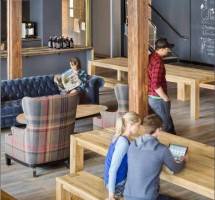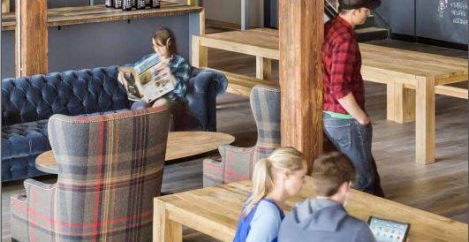September 16, 2016
CoreNet report sets out how technology will reshape corporate real estate 0
 The speed of today’s technological advances is dramatically reshaping the way that corporations manage and use their real estate. It’s a dynamic that has significant consequences for the workplace, urban development and the overall lifestyle of the average worker. Those are the unsurprising conclusions of a new report from trade association CoreNet Global, which was discussed this week at the organisation’s 2016 Summit – EMEA, held in Amsterdam. As ever, the devil is in the detail so the report is worth exploring to get a sense of just how imminent many of the changes will be, especially because they will converge to create a perfect storm of change for the workplace. This marks the new era out from the past when technology developed in more predictable ways. Several CoreNet Global Gold Strategic Partners contributed to the report including CBRE, Deloitte, ISS, JLL, Newmark Grubb Knight Frank, Sodexo and Steelcase.
The speed of today’s technological advances is dramatically reshaping the way that corporations manage and use their real estate. It’s a dynamic that has significant consequences for the workplace, urban development and the overall lifestyle of the average worker. Those are the unsurprising conclusions of a new report from trade association CoreNet Global, which was discussed this week at the organisation’s 2016 Summit – EMEA, held in Amsterdam. As ever, the devil is in the detail so the report is worth exploring to get a sense of just how imminent many of the changes will be, especially because they will converge to create a perfect storm of change for the workplace. This marks the new era out from the past when technology developed in more predictable ways. Several CoreNet Global Gold Strategic Partners contributed to the report including CBRE, Deloitte, ISS, JLL, Newmark Grubb Knight Frank, Sodexo and Steelcase.
“The real-world application of emerging technologies in how corporations manage and use their real estate means that the way people live and work will dramatically change,” said Kate Langan, chair of CoreNet Global, and Group General Manager Property for ANZ Banking Group, Melbourne, Australia. “In turn, these changes will reflect back on the overall corporation, improving efficiency, sustainability and profitability.” Langan said that several factors are converging to create a new style of working and living including:
The Next Generation Workplace
The increasingly mobile and connected workforce is changing real estate requirements with respect to how much space is needed, where facilities will be located, and how that space is configured, utilized and managed. The next generation workplace will be built around networks that will support this new mobile complexity.
Corporations will need to provide technology-enabled workplace networks that allow for greater agility and flexibility for both the organization and the employee.
Today’s workers have the ability to dictate a work style that is consistent with the lifestyle that they have chosen. Companies will have to learn to adapt in order to attract and retain talented workers.
Artificial Intelligence
Over the next 10 to 20 years, potentially 40 to 60 percent of the workforce that is now doing transactional work could be replaced and augmented by artificial intelligence, workforce automation and smart cognitive thinking machines. Companies need to plan for and address the shift from human work to robotics.
Smart Cities
Modernised workplaces and a growing trend toward urbanisation will in turn lead to smart cities and further change the way we work and live. Technological shifts in the way traffic, water, and other components of urban life are measured and distributed will modernize the city’s infrastructure. From the amount and kind of housing that is built, to the value of replacing old utility components with equipment that pays for itself, technology will drive a wide range of urban development initiatives.
The Internet of Things
In 2016 there will likely be 5.5 million new things that become connected to network infrastructure worldwide – each day. The universe of connected things will grow from an estimated 6.4 billion in 2016 to 20.8 billion by 2020. The Internet of Things (IoT) is gaining a foothold in operations, building management systems and the ongoing evolution of smart buildings and smart cities. Sensors are gathering data in a myriad of different areas ranging from security systems to digital light bulbs.
Beacon Technology
Beacon technology will be applied to office systems to help optimise the use of space. Beacon technology, for example, means that an individual doesn’t have to manually sign in or out of an office or conference room. Beacons will recognise when that person enters or exits a room, which will give managers greater ability to measure space utilisation.
Augmented Reality (AR) and Virtual Reality (VR)
AR and VR applications are expanding and increasingly becoming implemented in real-world settings. For example, corporations can use VR to bring colleagues together from different cities or countries to work on the design for a new electric car engine.
“There are several key takeaways,” Langan said. “More companies and their employees will choose to be in cities, which will provide higher levels of connectivity, energy efficiency, and mobile access. People will still go to their offices to work, but only when they need to for a specific purpose, and less as a matter of routine. The ramifications are quite dramatic; these shifts will impact everything from traffic patterns, the environment and energy, to daily living and the overall quality of life.”














